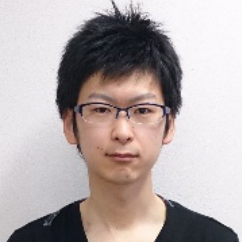International Journal of Intelligent Systems and Applications (IJISA)
IJISA Vol. 10, No. 5, 8 May 2018
Cover page and Table of Contents: PDF (size: 590KB)
Simplified Real-, Complex-, and Quaternion-Valued Neuro-Fuzzy Learning Algorithms
PDF (590KB), PP.1-13
Views: 0 Downloads: 0
Author(s)
Index Terms
Fuzzy inference, neuro-fuzzy, complex-valued neural network, quaternion neural network, function approximation, classification
Abstract
The conventional real-valued neuro-fuzzy method (RNF) is based on classic fuzzy systems with antecedent membership functions and consequent singletons. Rules in RNF are made by all the combinations of membership functions; thus, the number of rules as well as total parameters increase rapidly with the number of inputs. Although network parameters are relatively less in the recently developed complex-valued neuro-fuzzy (CVNF) and quaternion neuro-fuzzy (QNF), parameters increase with number of inputs. This study investigates simplified fuzzy rules that constrain rapid increment of rules with inputs; and proposed simplified RNF (SRNF), simplified CVNF (SCVNF) and simplified QNF (SQNF) employing the proposed simplified fuzzy rules in conventional methods. The proposed simplified neuro-fuzzy learning methods differ from the conventional methods in their fuzzy rule structures. The methods tune fuzzy rules based on the gradient descent method. The number of rules in these methods are equal to the number of divisions of input space; and hence they require significantly less number of parameters to be tuned. The proposed methods are tested on function approximations and classification problems. They exhibit much less execution time than the conventional counterparts with equivalent accuracy. Due to less number of parameters, the proposed methods can be utilized for the problems (e.g., real-time control of large systems) where the conventional methods are difficult to apply due to time constrain.
Cite This Paper
Ryusuke Hata, M. A. H. Akhand, Md. Monirul Islam, Kazuyuki Murase, "Simplified Real-, Complex-, and Quaternion-Valued Neuro-Fuzzy Learning Algorithms", International Journal of Intelligent Systems and Applications(IJISA), Vol.10, No.5, pp.1-13, 2018. DOI:10.5815/ijisa.2018.05.01
Reference
[1]J. S. Jang and C. T. Sun, “Neuro-fuzzy modeling and control,” Proceedings of IEEE, vol. 83, no. 3, Mar. 1995.
[2]G. Feng, “A survey on analysis and design of model-based fuzzy control systems,” IEEE Transactions on Fuzzy systems, vol. 14, no. 5, pp. 676–697, Oct. 2006.
[3]S. Kar, S. Das, and P. K. Ghosh, “Applications of neuro fuzzy systems: A brief review and future outline,” Applied Soft Computing, vol. 15, pp. 243–259, Feb. 2014.
[4]M. Ababou, M. Bellafkih and R. E. Kouch, “Energy Efficient Routing Protocol for Delay Tolerant Network Based on Fuzzy Logic and Ant Colony,” I. J. Intelligent Systems and Applications, vol. 10, no. 1, pp. 69-77, 2018.
[5]Amin Amini, Navid Nikraz,"Proposing Two Defuzzification Methods based on Output Fuzzy Set Weights", International Journal of Intelligent Systems and Applications(IJISA), Vol.8, No.2, pp.1-12, 2016. DOI: 10.5815/ijisa.2016.02.01
[6]Nidhi Arora, Jatinderkumar R. Saini,"Estimation and Approximation Using Neuro-Fuzzy Systems", International Journal of Intelligent Systems and Applications(IJISA), Vol.8, No.6, pp.9-18, 2016. DOI: 10.5815/ijisa.2016.06.02.
[7]Zhengbing Hu, Yevgeniy V. Bodyanskiy, Nonna Ye. Kulishova, Oleksii K. Tyshchenko, "A Multidimensional Extended Neo-Fuzzy Neuron for Facial Expression Recognition", International Journal of Intelligent Systems and Applications(IJISA), Vol.9, No.9, pp.29-36, 2017. DOI: 10.5815/ijisa.2017.09.04
[8]Nagham H. Saeed, Maysam.F. Abbod, "Modelling Oil Pipelines Grid: Neuro-fuzzy Supervision System", International Journal of Intelligent Systems and Applications(IJISA), Vol.9, No.10, pp.1-11, 2017. DOI: 10.5815/ijisa.2017.10.01
[9]Y. Shi, M. Mizumoto, N. Yubazaki, and M. Otani, “A method of fuzzy rules generation based on neuro-fuzzy learning algorithm,” Fuzzy Theory Systems, vol. 8, no. 4, pp. 103–113, Aug. 1996.
[10]Y. Shi, M. Mizumoto, N. Yubazaki, and M. Otani, “A learning algorithm for tuning fuzzy rules based on the gradient descent method,” Proceedings of the Fifth IEEE International Conference on Fuzzy Systems, 1996, pp. 55–61.
[11]Y. Shi and M. Mizumoto, “A new approach of neuro-fuzzy learning algorithm for tuning fuzzy rules,” Fuzzy sets and systems, vol. 112, no. 1, pp. 99–116, May 2000.
[12]W. Wu, L. Li, J. Yang, and Y. Liu, “A modified gradient-based neuro-fuzzy learning algorithm and its convergence,” Information Sciences, vol. 18, no. 9, pp. 1630–1642, May 2010.
[13]K. Shimojima, T. Fukuda, and Y. Hasegawa, “RBF-fuzzy system with GA based unsupervised/supervised learning method,” Proceedings of 1995 IEEE International Conference on Fuzzy Systems, 1995, vol. 1, pp. 253–258.
[14]J. Kim and N. Kasabov, “HyFIS: adaptive neuro-fuzzy inference systems and their application to nonlinear dynamical systems,” Neural Networks, vol. 12, no. 9, pp. 1301–1319, Nov. 1999.
[15]A. Bhardwaj and K. K. Siddhu, “An Approach to Medical Image Classification Using Neuro Fuzzy Logic and ANFIS Classifier,” International Journal of Computer Trends and Technology, vol. 4, no. 3, pp. 236–240, 2013.
[16]S. Ghosh, S. Biswas, D. Sarkar, and P. P. Sarkar, “A novel neuro-fuzzy classification technique for data mining,” Egyptian Informatics Journal, vol. 15, no. 3, pp. 129–147, Sept. 2014.
[17]P. Naresh and R. Shettar, “Image processing and classification techniques for early detection of lung cancer for preventive health care: A survey,” International Journal on Recent Trends in Engineering & Technology, vol. 11, no. 1, pp. 595–601, July 2014.
[18]S. Ghosh, S. Biswas, D. C. Sarkar, and P. P. Sarkar, “Breast cancer detection using a neuro-fuzzy based classification method,” Indian Journal of Science and Technology, vol. 9, no. 14, Apr. 2016.
[19]S. K. Biswas, M. Bordoloi, H. R. Singh, and B. Purkayastha, “A neuro-fuzzy rule-based classifier using important features and top linguistic features,” International Journal of Intelligent Information Technologies (IJIIT), vol. 12, no. 3, pp. 38–50, Sept. 2016.
[20]J. E. Nalavade and T. S. Murugan, “HRNeuro-fuzzy: Adapting neuro-fuzzy classifier for recurring concept drift of evolving data streams u sing rough set theory and holoentropy,” Journal of King Saud University-Computer and Information Sciences, Nov. 2016.
[21]H. R. Singh, S. K. Biswas, and B. Purkayastha, “A neuro-fuzzy classification technique using dynamic clustering and GSS rule generation,” Journal of Computational and Applied Mathematics, vol. 309, pp. 683–694, Jan. 2017.
[22]K. Subramanian, R. Savitha, and S. Suresh, “A complex-valued neuro-fuzzy inference system and its learning mechanism,” Neurocomputing, vol. 123, no. 10, pp. 110–120, Jan. 2014.
[23]C. Li, T. Wu, and F. T. Chan, “Self-learning complex neuro-fuzzy system with complex fuzzy sets and its application to adaptive image noise canceling,” Neurocomputing, vol. 94, no. 1, pp. 121–139, Oct. 2012.
[24]R. Hata, M. M. Islam, and K. Murase, “Generation of fuzzy rules based on complex-valued neuro-fuzzy learning algorithm,” 3rd International Workshop on Advanced Computational Intelligence and Intelligent Informatics (IWACIII 2013), 2013, GS1-3_D13070130.
[25]R. Hata and K. Murase, “Generation of fuzzy rules by a complex-valued neuro-fuzzy learning algorithm,” Fuzzy Theory and Intelligent Informatics, vo. 27, no. 1, pp. 533–548, Mar. 2015.
[26]R. Hata, M. M. Islam, and K. Murase, “Quaternion neuro-fuzzy learning algorithm for fuzzy rule generation,” Proceedings of the Second International Conference on Robot, Vision and Signal Processing (RVSP 2013), 2013, pp. 61–65, Dec. 2013.
[27]R. Hata and K. Murase, “Quaternion neuro-fuzzy for real-valued classification problems,” Proceedings of the Joint 7th International Conference on Soft Computing and Intelligent Systems and 15th International Symposium on Advanced Intelligent Systems (SCIS&ISIS 2014), 2014, pp. 655–660.
[28]R. Hata, M. M. Islam, and K. Murase, “Quaternion neuro-fuzzy learning algorithm for generation of fuzzy rules,” Neurocomputing, vol. 216, pp. 638–648, Dec. 2016.
[29]R. Hecht-Nielsen, “Theory of the backpropagation neural network,” Proceedings of International Joint Conference on Neural Networks, 1989, pp. 593–605.
[30]M. F. Amin and K. Murase, “Single-layered complex-valued neural network for real-valued classification problems,” Neurocomputing, vol. 72, no. 4, pp. 945–955, Jan. 2009.
[31]M. F. Amin, M. M. Islam, and K. Murase, “Ensemble of single-layered complex-valued neural networks for classification tasks,” Neurocomputing, vol. 72, no. 10, pp. 2227–2234, June 2009.
[32]K. Bache and M. Lichman, UCI Machine Learning Repository, Univ. California, Irvine, CA, USA, 2013.
[33]D. M. Atia and H. T. El-madany, “Analysis and design of greenhouse temperature control using adaptive neuro-fuzzy inference system,” Journal of Electrical Systems and Information Technology, Oct. 2016.
[34]C. M. Lin and C. F. Hsu, “Self-learning fuzzy sliding-mode control for antilock braking systems,” IEEE Transactions on Control Systems Technology, vol. 11, no. 2, pp. 273–278, Mar. 2003.
[35]S. R. Munasinghe, M. S. Kim, and J. J. Lee, “Adaptive neurofuzzy controller to regulate UTSG water level in nuclear power plants,” IEEE Transactions on Nuclear Science, vol. 52, no. 1, pp. 421–429, Feb. 2005.



